Koi Fish Colors and Patterns: What Do They Mean?
May 27th 2025

May 27th 2025

Koi fish are not only exquisite additions to ponds, but they also carry rich symbolism alongside their beauty. Their intricate patterns and colors hold meaning, especially with the Japanese, who regard them as mesmerizing creatures interwoven into their cultural legacy. Japanese koi culture is so deep that it has profound artistic and historical roots, which revolve around different koi colors representing their virtues and values, such as perseverance, affection, wealth, and fortune.
Different koi fish shows held around the world still award koi competitions based on the vividness of their colors, the clarity of their patterns, and the outstanding beauty they possess. This custom fires the imagination in every artist and is deeply celebrated to this day.
Koi shows in competitions around the world reserve a special place for them, still judging the koi based on color purity, pattern clarity, and the story behind their appearance. Ancient times have boundless signs of devotion, and koi fish served as symbols of self-devotion and achieving success. So, what do the colors and patterns in Koi mean? Here’s your Fitz’s Fish Ponds Guide to Success.
Every single color in the world of koi is essential, and koi owners and breeders have appreciated it for years, and it is not random. Let's dive deeper into some of the best-known koi colors and their meanings.
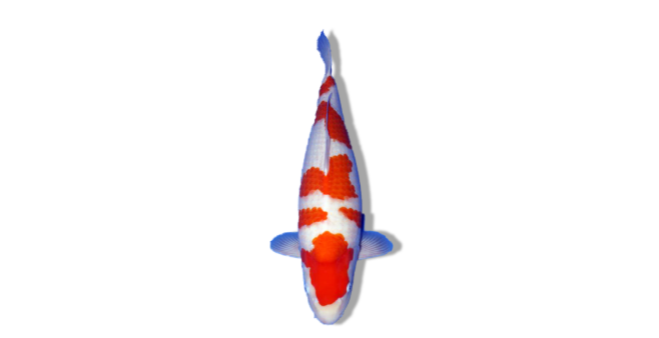
Kohaku koi is amongst the oldest and most loved varieties of koi. Their white bodies with red hi patterns represent love, purity, and a bright future. In Komono culture, a clean white base reinforces life free of burdens. Red patterns signify passion and energy, thus a life filled with exuberance.
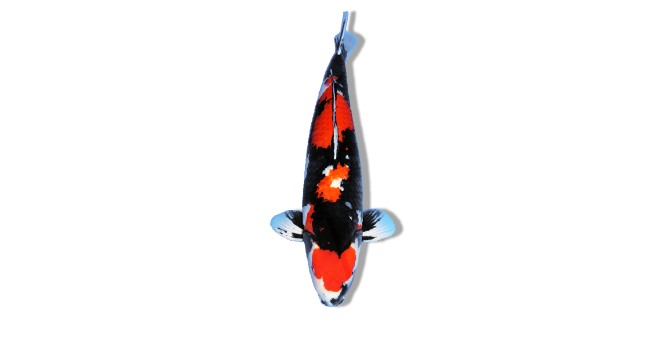
Showa koi switches up the trademark Sanke coloring, starting with a black base. The red and white colors symbolize joy and purity that emerged from struggle, which signifies overcoming adversity. Many pond owners who admire round-the-clock resilience love to check out Showa koi.
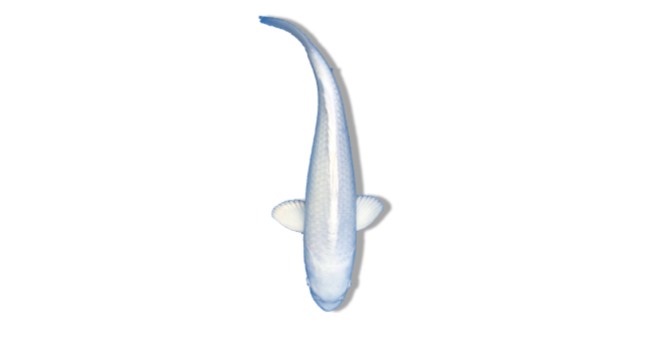
Ogon koi shimmer with golden (Yamabuki), platinum, and even orange (Orengi) metallic colors. They are often tied to wealth, success, and career growth. Moreover, their striking, unblemished color conveys a bold personal image.
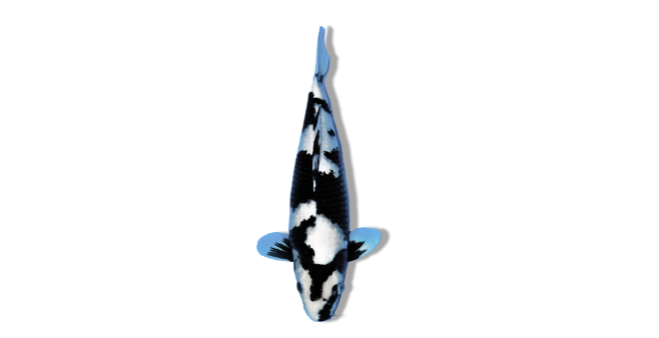
Shiro Utsuri koi varieties sport a black background with red, white, or yellow streaks. In koi culture, these embody the balance between light and dark or obstacles and triumphs. Many regard them as reminders of nature’s rhythm.
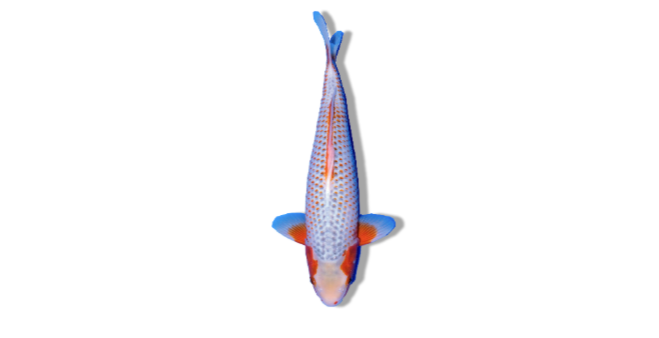
Asagi koi are one of the oldest types of koi. They are renowned for their tranquil blue-gray body and soft red bellies. Asagi symbolizes calmness, stability, and gentle change. Many people favored them because they seek balance and peace in their ponds.
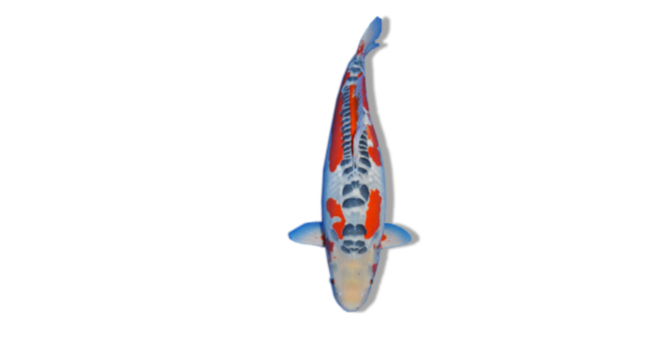
Shusui koi is the more recent scaleless variation of the Asagi. Their meaning is essentially the same: serene and peaceful waters, but with a strong hint of change because of their unfamiliar looks.

Bekko koi are calm and straightforward in design, exhibiting black spots on colored backgrounds. Their understated yet bold markings suggest quiet strength. They may not be eye-catching initially, but they are highly dependable traits that appeal to many koi enthusiasts.
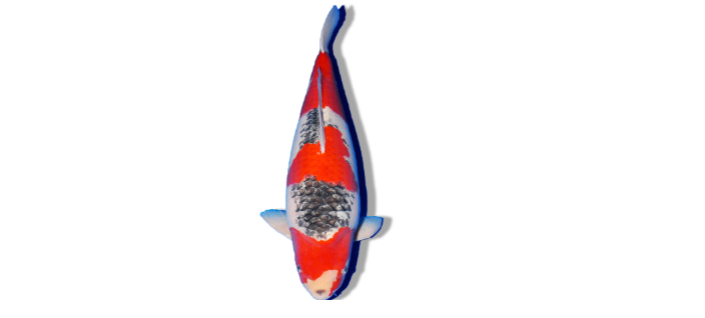
Goshiki koi blend black, white, red, light blue, and dark blue. They showcase the richness of life experiences, resilience, and the beauty of overcoming challenges. Their blend of colors encapsulates life’s diverse journey and the experiences it holds. A pond set with Goshiki seems like a vibrant tapestry of life’s adventures.
Koi are valued in ornamental and cultural aspects and have a range of symbols attached to them. The placement, intensity, and level of balance of each pattern dictate how they are valued and interpreted.

Tancho koi have a pure white body with a single red circle that resembles Japan's national bird. The crimson circle embodies harmony and concentrated growth in life. They are auspicious fish in Japan and are greatly prized.
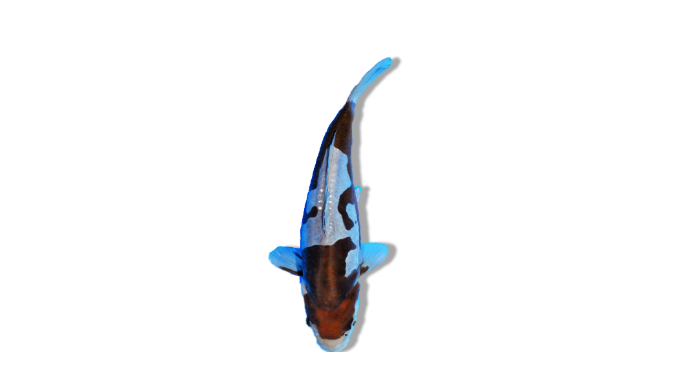
Those who own koi will appreciate that Doitsu scales remind them that everything does not need to be traditional in the world. To maintain their simplicity and uniqueness, Doitsu koi lack the full scale, which reflects individuality. Note the merged markings and brilliant, darker colors on the Doistu Ochiba.
Serious collectors of Koi often seek out these rare color variations, even though some are not well known.
When embracing personal interpretation, many symbols can be associated with these rare types of koi. This surely defines the value of symbolism.
Koi are fascinating creatures and are known to change their colors over time! Young koi tend to lighten and darken, and new patterns arise during their maturity, embodying the idea of transformation, growth, and life.
If you want to think out of the box and appreciate the koi for their stunning looks but also their meanings, here are some ideas to consider:
Wondering how to care for your koi fish? First off, genetics is not the sole determining factor for their bright, distinct coloring. Proper water quality, nutrition, and a stress-free habitat are just as important. Having clean filter systems in the pond alongside high-quality koi food will ensure that your koi are as splendid now as when you first got them. Moreover, koi are very active and cheerful, which many owners find is aided even more by a tranquil pond environment.
As koi fish age, they undergo shifts in color due to their genetics, water quality, and diet.
Generally, the most valuable koi is the pure-white Kohaku with vivid red markings carved out on it.
Sometimes, it depends on how the shine enhances the koi's appearance.
They do so through selective breeding over numerous generations, focusing on color purity and consistent, identifiable patterns.
Yes, in the US, bright and tendentious colors are often preferred, while in Japan, classic Kohaku is a favorite.
Poor water quality, stress, an unbalanced diet, or genetics can cause color fading. If improving the pond’s condition and diet does not restore some vibrancy, koi can sometimes cycle through those conditions. Under the RIGHT conditions, some color can be regained, but often the vibrancy is permanently diminished.
A few are highly sought out, but the rarest are entirely black ones known as Karasu.
If they are juveniles, being healthy, energetic, and having a strong, vibrant appearance with clear markings are the ideal indicators to look for.
No. Many consider koi's flaws to be defining features that add to its value.
At Fitz's Fish Ponds, we do more than just build ponds or offer pond maintenance services; we weave stories with koi that transform into magnificent sculptures waiting to be discovered. Find Your Next Koi Fish Online Today!
Contact us today at (908) 420-9908. Or Talk to An Expert Online Now!
| Hours | |
|---|---|
| sunday | Closed |
| monday | Closed |
| tuesday | 10:00-5:00 |
| wednesday | 10:00-5:00 |
| thursday | 10:00-5:00 |
| friday | 10:00-5:00 |
| saturday | 10:00-5:00 |
| Hours | |
|---|---|
| sunday | 10:00-5:00 |
| monday | Closed |
| tuesday | 11:00-6:00 |
| wednesday | 11:00-6:00 |
| thursday | 11:00-6:00 |
| friday | 11:00-6:00 |
| saturday | 10:00-5:00 |
| Hours | |
|---|---|
| sunday | 10:00-4:00 |
| monday | Closed |
| tuesday | 10:00-5:00 |
| wednesday | 10:00-5:00 |
| thursday | 10:00-5:00 |
| friday | 10:00-5:00 |
| saturday | 10:00-5:00 |
| Hours | |
|---|---|
| sunday | 10:00-5:00 |
| monday | Closed |
| tuesday | 11:00-6:00 |
| wednesday | 11:00-6:00 |
| thursday | 11:00-6:00 |
| friday | 11:00-6:00 |
| saturday | 10:00-5:00 |
| Hours | |
|---|---|
| sunday | Closed |
| monday | 9:00-5:00 |
| tuesday | 9:00-5:00 |
| wednesday | 9:00-5:00 |
| thursday | 9:00-5:00 |
| friday | 9:00-5:00 |
| saturday | Closed |
| Hours | |
|---|---|
| sunday | 10:00-4:00 |
| monday | Closed |
| tuesday | 10:00-5:00 |
| wednesday | 10:00-5:00 |
| thursday | 10:00-5:00 |
| friday | 10:00-5:00 |
| saturday | 10:00-5:00 |
| Hours | |
|---|---|
| sunday | Closed |
| monday | Closed |
| tuesday | 10:00-5:00 |
| wednesday | 10:00-5:00 |
| thursday | 10:00-5:00 |
| friday | 10:00-5:00 |
| saturday | 10:00-5:00 |
| Hours | |
|---|---|
| Sunday | Closed |
| Monday | Closed |
| Tuesday | 10:00-5:00 |
| Wednesday | 10:00-5:00 |
| Thursday | 10:00-5:00 |
| Friday | 10:00-5:00 |
| Saturday | 10:00-5:00 |
| Hours | |
|---|---|
| Sunday | 10:00-4:00 |
| Monday | Closed |
| Tuesday | 10:00-5:00 |
| Wednesday | 10:00-5:00 |
| Thursday | 10:00-5:00 |
| Friday | 10:00-5:00 |
| Saturday | 10:00-5:00 |









| Hours | |
|---|---|
| sunday | Closed |
| monday | Closed |
| tuesday | 10:00-5:00 |
| wednesday | 10:00-5:00 |
| thursday | 10:00-5:00 |
| friday | 10:00-5:00 |
| saturday | 10:00-5:00 |
| Hours | |
|---|---|
| sunday | 10:00-5:00 |
| monday | Closed |
| tuesday | 11:00-6:00 |
| wednesday | 11:00-6:00 |
| thursday | 11:00-6:00 |
| friday | 11:00-6:00 |
| saturday | 10:00-5:00 |
| Hours | |
|---|---|
| sunday | 10:00-4:00 |
| monday | Closed |
| tuesday | 10:00-5:00 |
| wednesday | 10:00-5:00 |
| thursday | 10:00-5:00 |
| friday | 10:00-5:00 |
| saturday | 10:00-5:00 |
| Hours | |
|---|---|
| sunday | 10:00-5:00 |
| monday | Closed |
| tuesday | 11:00-6:00 |
| wednesday | 11:00-6:00 |
| thursday | 11:00-6:00 |
| friday | 11:00-6:00 |
| saturday | 10:00-5:00 |
| Hours | |
|---|---|
| sunday | Closed |
| monday | 9:00-5:00 |
| tuesday | 9:00-5:00 |
| wednesday | 9:00-5:00 |
| thursday | 9:00-5:00 |
| friday | 9:00-5:00 |
| saturday | Closed |
| Hours | |
|---|---|
| sunday | 10:00-4:00 |
| monday | Closed |
| tuesday | 10:00-5:00 |
| wednesday | 10:00-5:00 |
| thursday | 10:00-5:00 |
| friday | 10:00-5:00 |
| saturday | 10:00-5:00 |
| Hours | |
|---|---|
| sunday | Closed |
| monday | Closed |
| tuesday | 10:00-5:00 |
| wednesday | 10:00-5:00 |
| thursday | 10:00-5:00 |
| friday | 10:00-5:00 |
| saturday | 10:00-5:00 |
| Hours | |
|---|---|
| Sunday | Closed |
| Monday | Closed |
| Tuesday | 10:00-5:00 |
| Wednesday | 10:00-5:00 |
| Thursday | 10:00-5:00 |
| Friday | 10:00-5:00 |
| Saturday | 10:00-5:00 |
| Hours | |
|---|---|
| Sunday | 10:00-4:00 |
| Monday | Closed |
| Tuesday | 10:00-5:00 |
| Wednesday | 10:00-5:00 |
| Thursday | 10:00-5:00 |
| Friday | 10:00-5:00 |
| Saturday | 10:00-5:00 |
